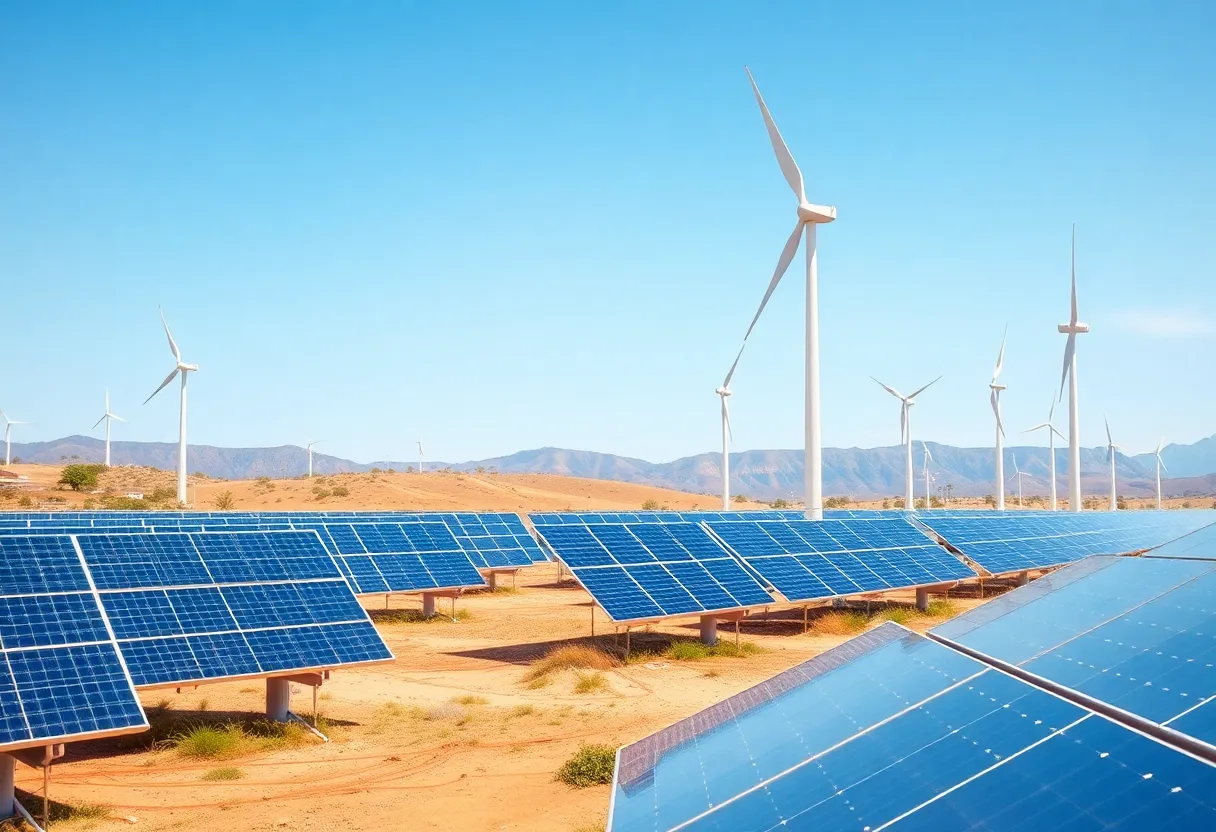News Summary
In response to federal cuts threatening clean energy efforts, California lawmakers are reevaluating environmental permitting regulations. With an urgent need for a streamlined process, proposals are on the table to exempt clean energy projects from CEQA, aiming to mitigate construction delays. However, environmental groups are concerned about potential fallout from these changes. Despite the challenges, California continues to push for an increased focus on solar power, even as energy prices rise. The state leaders must find a balance between advancing clean energy and protecting environmental interests.
California Lawmakers Take Action on Clean Energy Amid Federal Cuts
California lawmakers are considering significant changes to environmental permitting regulations in response to recent federal actions that threaten clean energy initiatives. The Trump administration’s latest “megabill” dismantles crucial tax credits essential for the advancement of solar, wind, and electric vehicle projects, prompting state leaders to reevaluate how they can foster clean energy development without federal support.
Urgency Drives Legislative Change
With clean energy advocates expressing concern that California’s budget cannot replace the lost federal incentives, there is a growing call for a streamlined permitting process to expedite the initiation of critical projects. As part of this effort, Senator Scott Wiener, the chair of the Senate Budget Committee, has proposed exemptions for clean energy projects from the California Environmental Quality Act (CEQA). This would address the construction delays often associated with initiating such projects.
Impending Deadlines Complicate Clean Energy Goals
The megabill stipulates that energy projects must commence construction by July 4, 2026, or begin service by the end of 2027 to qualify for essential federal subsidies. This timeline poses a challenge for California, known for its lengthy project approval durations. A concerning report indicates that 794 energy projects nationwide, including 60 within California, are at risk of missing out on these critical tax breaks due to construction delays.
Environmental Concerns Arise
While some lawmakers push for expedited project approvals, environmental groups are raising alarms about the potential consequences of CEQA exemptions. They argue that bypassing these regulations could undermine important environmental protections that have historically maintained California’s natural resources. Senator Caroline Menjivar has shown reluctance to endorse further smaller CEQA reform bills, emphasizing the need for a balanced approach that does not compromise environmental integrity.
Responses from State Leadership
Governor Gavin Newsom has expressed support for increasing state investments in electric vehicle incentives, especially following the elimination of the federal $7,500 tax credit for electric vehicle buyers. However, navigating the allocation of limited financial resources remains a challenge. Legislators are adamant about prioritizing cap-and-trade revenues, leading to contentious discussions about funding decisions.
Growth of Solar Power in California
In response to these challenges, California has seen impressive growth in solar power production, which reached 79,544 gigawatt-hours by 2024, enough to power approximately 7.4 million homes. Despite this rapid deployment, issues of public and private corruption practices within the solar market have emerged. A study from Boston University indicated the presence of favoritism during project approvals and other corruption risks, which could hinder a just and equitable energy transition.
Challenges in Addressing Corruption and Accountability
Calls for reforms in governance and heightened transparency during solar project approval processes are prevalent among researchers. These efforts aim to improve accountability and deter potential corruption, ensuring that the shift toward renewable energy is managed effectively and fairly.
The Economic Impacts of Energy Policy
Amid these legislative and developmental changes, California’s energy prices remain the highest in the United States, significantly impacting consumers who face soaring electricity and gasoline costs. As the state pushes toward a carbon-neutral future by 2045, concerns arise that economic disparities may widen, disproportionately affecting lower-income individuals who could experience income declines.
A Call for a Balanced Energy Strategy
Critics of California’s aggressive green energy policies argue that a more balanced approach should be taken. They emphasize the importance of incorporating natural gas and other fossil fuels into the state’s energy strategy to promote economic prosperity and ensure a reliable energy supply.
As the state grapples with urgent clean energy needs, lawmakers face the challenge of forging a sustainable path while balancing environmental protections and economic considerations.
Deeper Dive: News & Info About This Topic
Construction CA Resources
New Tax Reforms Enhance Construction and Minerals Production
Funding Cuts Delay Milwaukee’s 6th Street Reconstruction Project
Clifford Chance Secures $282.5 Million Green Financing for Aurora Solar Project
New Partnership Promises Faster Nuclear Reactor Construction
NORD/LB Finances €110 Million for Solar Projects in Spain
Evolving Green Building Certifications Prioritize Operational Emissions
Seven Hydrogen Hubs Urge Senate to Maintain Tax Credits
Additional Resources
- Spectrum News: California Lawmakers Take Action on Clean Energy
- Canary Media: California Waste and Clean Energy Curtailments
- Utility Dive: California Could Nearly Double Generation Capacity
- Los Angeles Times: California’s Renewable Energy Future
- Wikipedia: Clean Energy
- Google Search: California Energy Policy
Author: Construction CA News
The CALIFORNIA STAFF WRITER represents the experienced team at constructioncanews.com, your go-to source for actionable local news and information in California and beyond. Specializing in "news you can use," we cover essential topics like product reviews for personal and business needs, local business directories, politics, real estate trends, neighborhood insights, and state news affecting the area—with deep expertise drawn from years of dedicated reporting and strong community input, including local press releases and business updates. We deliver top reporting on high-value events such as the Rose Parade, Coachella, Comic-Con, and the California State Fair. Our coverage extends to key organizations like the California Building Industry Association and Associated General Contractors of California, plus leading businesses in technology and entertainment that power the local economy such as Apple and Alphabet. As part of the broader network, including constructionnynews.com, constructiontxnews.com, and constructionflnews.com, we provide comprehensive, credible insights into the dynamic landscape across multiple states.




